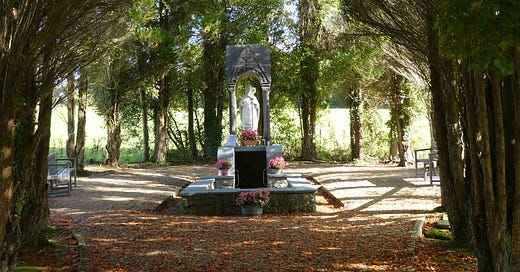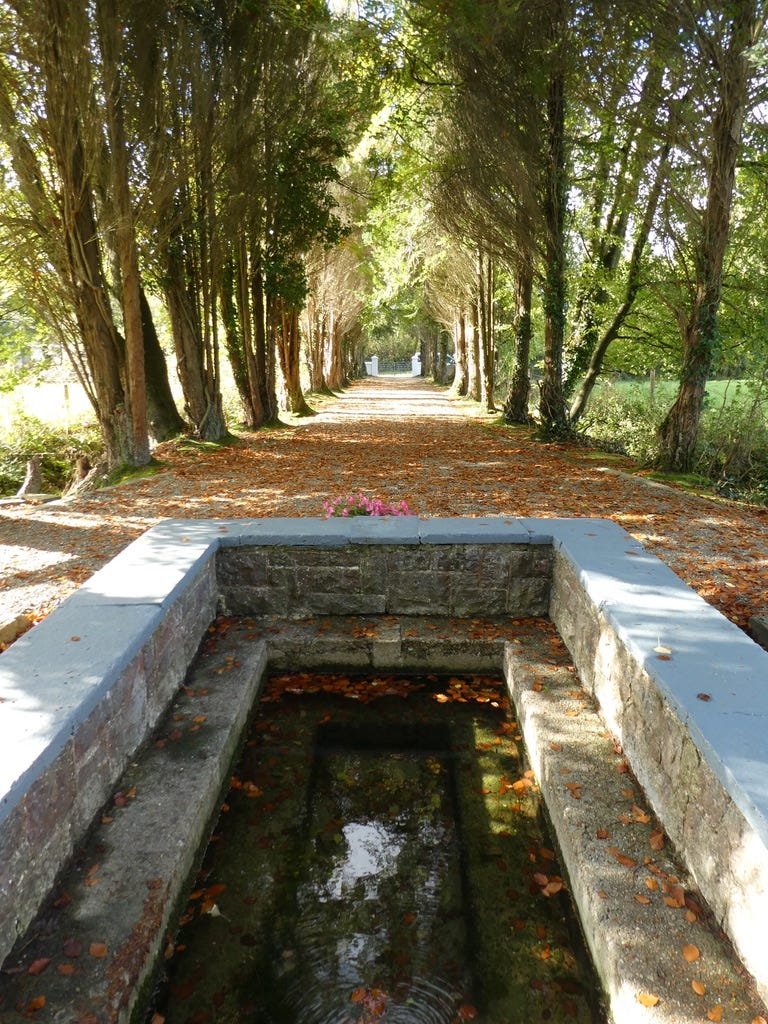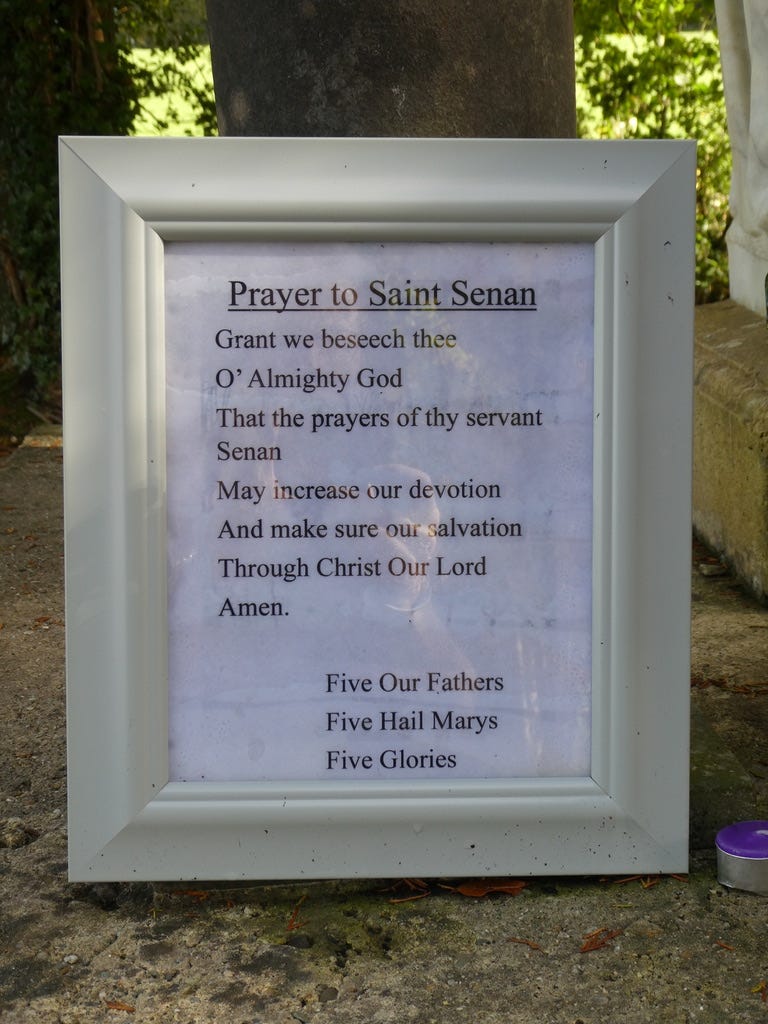St Senan Liath’s Holy Well, Doonass, County Clare
Why do all saints look the same? Not in real life, I mean: in real life, we have no idea what these men and women from so many centuries ago looked like. But when it comes to statues standing over wells, there’s a lot of mistaken identity about. When I arrived at this quiet well in County Clare, not knowing what to expect, I just assumed this was St Patrick:
It’s an easy mistake to make. After all, Patrick apparently looked like this too, along with hundreds of other Irish saints. Beard, crozier, pointy Bishops’ hat: he’s got the look. How was I to know it was St Senan Liath?
Actually, there is still some debate about how anybody knows that, but we’ll get to that in a minute.
This well is to be found down a quiet lane near the river Shannon (which may also be the origin of this saint’s name), carved out of a farmer’s field. A long tree-lined avenue takes you to an impressive stone arch, apparently taken from the old courthouse in nearby Nenagh, under which our statue stands. Beneath that is the water:
The well itself - you can see it under the statue - is a square stone basin full of clear water, fed by a spring. On my visit it was sprinkled with the leaves of autumn birches and a few late summer blossoms:
You may have noticed from the photo above, though, that the well is not the only body of water to be found on the site. In front of it is a longer, thinner stretch of water which looks almost like a swimming pool. I wondered if it was for baptisms. It would be a good place for it, at least on a day like this.
A rifle through the archives of our old friends the schoolchildren of the 1930s offers what might be one explanation for the twin pools here. Young Josephine Moloney explains that the well, back in the 1930s, was divided into two parts: one for drinking, and one for curing illnesses. Perhaps this is still the case. It would be another reason for a pool big enough for people to climb into.
Josephine offers a few other good stories too. One of them features that old Irish folk standby the Bad Protestant Landlord, featuring in a common tale in well folklore, that of the disrespected well which takes its revenge:
A good few years ago the well was desecrated by Sir Hugh Dillon Massery of Doonass, a Protestant Landlord of the district who heard of the wonderful healing powers of the water. He took a blind horse there to be cured, on bathing his eyes in the water the horse was instantly cured, but strange to relate his owner was stricken with blindness.
When I hear stories like this, I always wonder whether the act of revenge was carried out by the well itself, or the saint associated with it. Revenge is not a saintly attribute, but as ever in these stories, the line is blurry. It doesn’t really matter, I suppose, as long as the visitor gets the message, which in this case is: no horses at the well!
Mind you, there is some debate as to who this well’s saint actually is: or, more specifically, whether he is one saint or two. Senan Liath means, in Irish, ‘Senan the grey’ (which may explain why he looks a bit like Gandalf). This appellation is used locally to distinguish this Senan from his more famous namesake, St Senan of Scattery, who headed a well-known monastery on Scattery Island in the Shannon estuary in the sixth century.
As with so many early saints here, a number of intriguing tales have gathered themselves around St Senan, the best of which concerns a sea monster. Scattery Island’s name in Irish is Inis Cathaigh: island of the Cathach. The ‘Cathach’ in question was a giant sea monster who lived on Scattery, and who would summarily eat anyone who set foot on it. But it was God’s will that a monastery should be built there, and Senan had been chosen to do it. He sailed to the island, and on his arrival, the beast, which had a horse’s mane and eyes of fire, raged towards him. Senan swiftly stilled him with the sign of the cross, and then expelled him with prayer. The monster fled to a lake in the Burren, where he lived out his days. Assuming, that is, that he isn’t still there. You never know with sea monsters. They tend to have a long shelf life.
Is this the Senan who stands guard over this well? Local people apparently stand over their claim that Senan Liath is a different man. But there is no trace of him in the records, it seems, and he shares a name day with the saint of Scattery. We will, as usual, never know. But I’m sure that either man could still protect us from monsters if we asked.











Mr. Kingsnorth, the essay below was in my inbox this morning and I though you might find it interesting….in the off-chance that you don’t already know about it.
https://besharamagazine.org/newsandviews/an-irish-atlantic-rainforest/
All the best!
God bless little Josephine Moloney, her story was wonderful....."strange to relate"😊